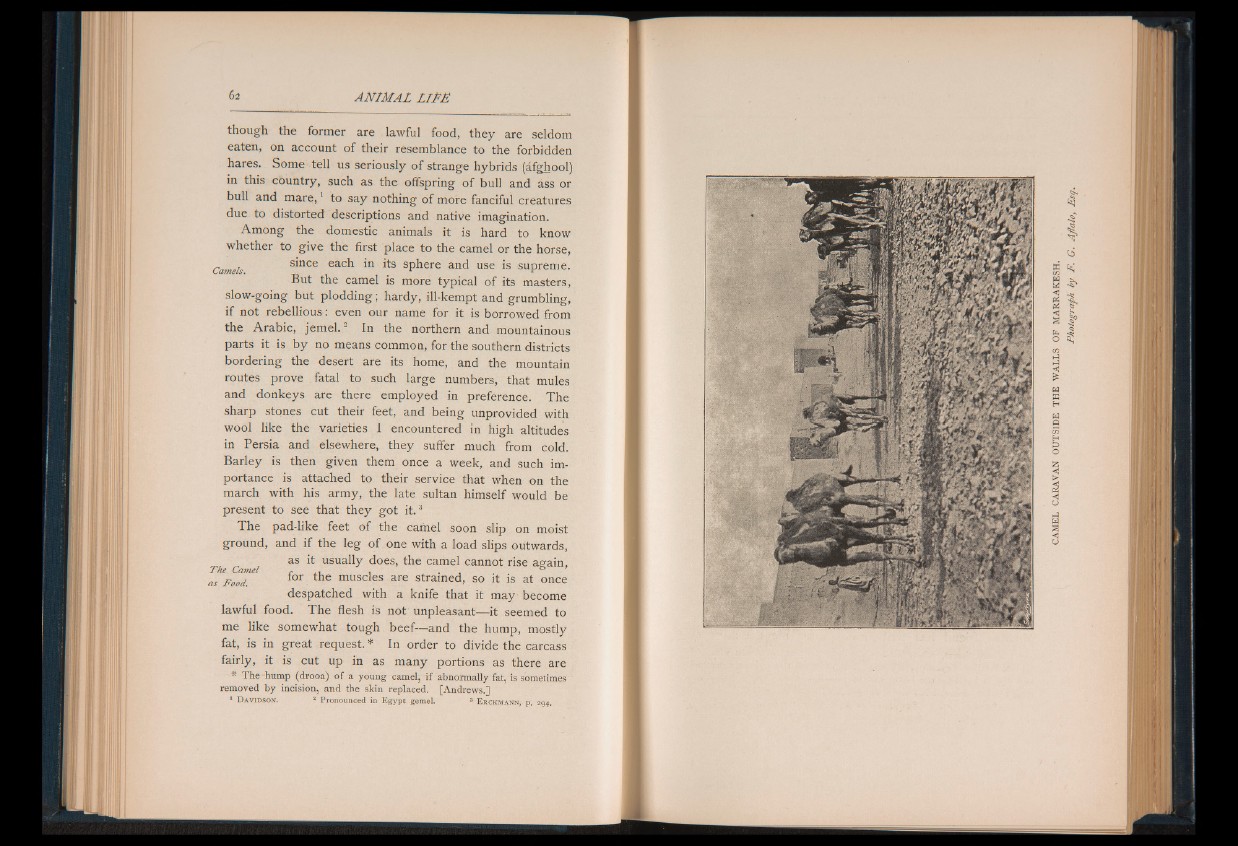
though the former are lawful food, they are seldom
eaten, on account o f their resemblance to the forbidden
hares. Some tell us seriously o f strange hybrids (áfghool)
in this country, such as the offspring o f bull and ass or
bull and mare, 1 to sa y nothing o f more fanciful creatures
due to distorted descriptions and native imagination.
Among the domestic animals it is hard to know
whether to give the first place to the camel or the horse,
Camels since each in its sphere and use is supreme.
But the camel is more typical o f its masters,
slow-going but plodding; hardy, ill-kempt and grumbling,
if not rebellious: even our name for it is borrowed from
the Arabic, jemel.2 In the northern and mountainous
parts it is by no means common, for the southern districts
bordering the desert are its home, and the mountain
routes prove fatal to sudi large numbers, that mules
and donkeys are there employed in preference. The
sharp stones cut their feet, and being unprovided with
wool like the varieties I encountered in high altitudes
in Persia and elsewhere, they suffer much from cold.
Barley is then given them once a week, and such importance
is attached to their service that when on the
march with his army, the late sultan himself would be
present to see that they got it .3
The pad-like feet of the camel soon slip on moist
ground, and if the leg of one with a load slips outwards,
as it usually does, the camel cannot rise again,
y Camel
as Food. for the muscles are strained, so it is at once
despatched with a knife that it may become
lawful food. The flesh is not unpleasant— it seemed to
me like somewhat tough beef— and the hump, mostly
fat, is in great request. * In order to divide the carcass
fairly, it is cut up in as many portions as there are
* The hump (drooa) of a young camel, if abnormally fat, is sometimes
removed by incision, and the skin replaced. [Andrews.]
1 D a v i d s o n . 3 Pronounced in Egypt gemel. 3 E r c k m a n n , p. 29 4 .